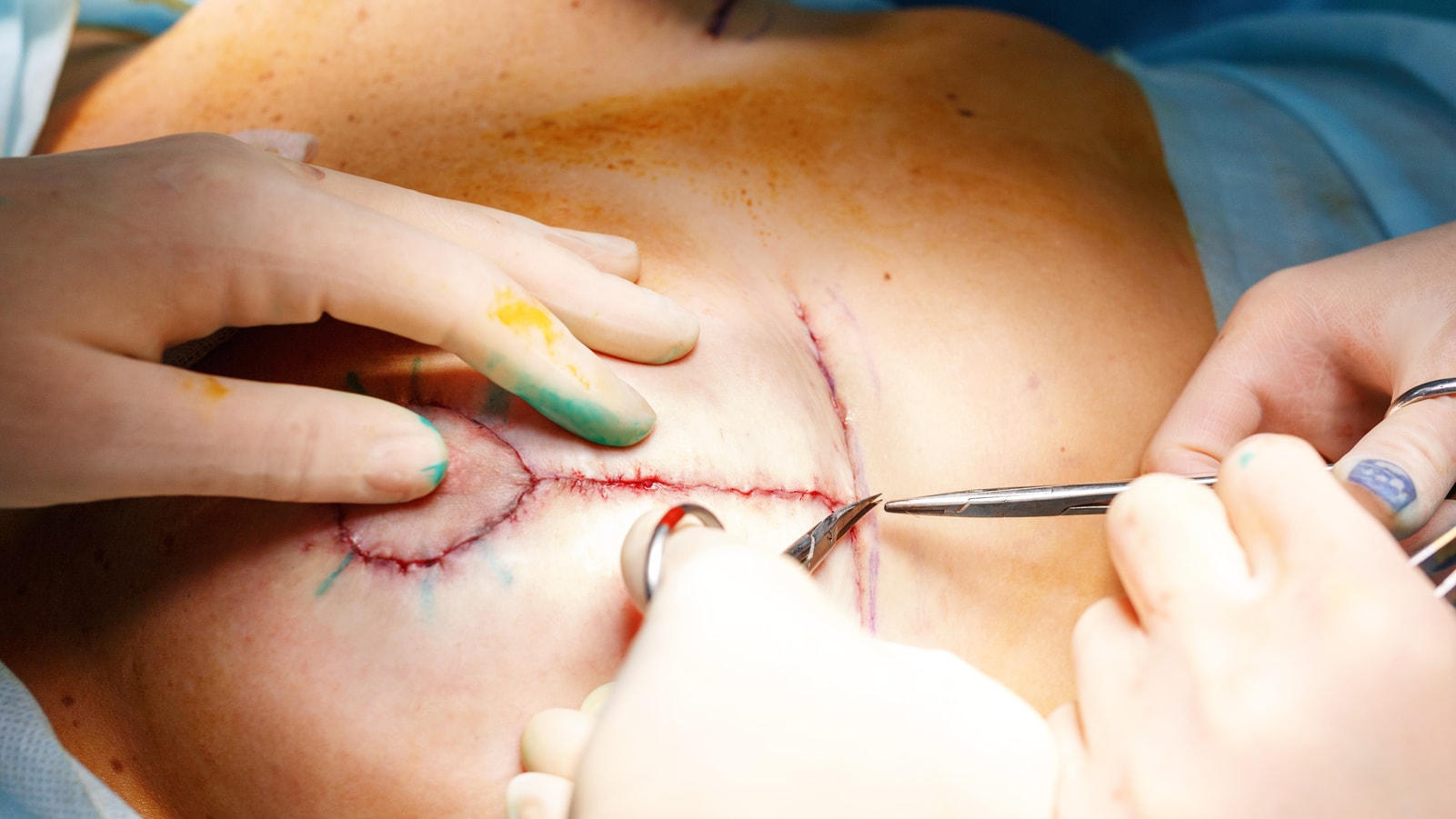
A breast reduction is a combination procedure that involves reducing the size of the breast, reshaping the breast, and lifting the position of the breast on the chest wall. It combines the removal of excess skin and excess breast tissue to be rearranged in order to create a more aesthetically pleasing smaller breast.
Macromastia (abnormal largeness of the breasts) usually occurs due to a combination of increased size as well as an increased drooping of the breast from the heaviness of the tissue. There is stretching of the skin as well as stretching of the support and structure of the breast. Patients often present complaining of chronic back, neck, and shoulder pain grooving from bra straps, and even skin infections of the breast fold. As part of the breast reduction the patient gets a lift as well, which is removal of the skin without the removal of breast tissue. A breast reduction is performed similarly but is a combination of the removal of the skin and breast tissue.
There are two basic scar patterns with breast reduction techniques:
A doctor should use the patient’s existing breast shape and size to dictate which type of scar pattern is best for them. Patients with larger, wider, and flatter breasts do better with the Wise pattern. Patients with a little less ptosis (drooping) and rounder shaped breasts are more ideal for a vertical scar pattern.
Patients with generally large breasts are the ideal candidates for a breast reduction. Additionally, patients that have experienced massive weight loss through bariatric surgery or patients that have lost weight on their own through diet and exercise are also good candidates for breast reduction. Although the purpose of the surgery is to simply reduce the breast size, many patients find relief of their back pain symptoms immediately after surgery.
There really is no limit to how much of a breast reduction can be performed. As long as there is enough breast tissue to contain the blood supply to the nipple-areolar complex for the nipple to maintain its vascularity, the reduction can be performed.
A doctor can reduce the size considerably if that is what the patient wants. The reduction also has to fit their frame by considering the overall body habitus of the patient. The breast needs to be reduced enough so that the shape and size of the breast looks good and aesthetically pleasing.
Many breast reduction techniques are paid for by insurance. However, insurance companies have criteria of how much tissue or volume needs to be removed in order to be considered a legitimate breast reduction.
For example, an insurance company might say the breast has to be reduced 500g even though the patient has all of the symptoms of macromastia. If the doctor cannot reduce the breasts enough to achieve the size the patient wants while also fitting their frame, the procedure might fall more under the spectrum of a breast lift and less of a reduction. The insurance company may not pay for it under these circumstances. It is purely based on the volume criteria of the insurance companies. Insurance company criteria’s are somewhat arbitrary and differ from each carrier.
The short-term complications are the same as any breast surgery:
The most serious complication associated with any breast surgery is damage to the blood supply if the nipple which can result in partial or complete nipple loss. Although devastating, this is an extremely rare complication. It should be part of any pre-operative discussion with your surgeon, but not something that should overshadow the benefits of surgery. Breast reduction uniformly has one of the highest patient satisfaction rates of all plastic surgery procedures.
Issues with breastfeeding can sometimes happen following the surgery. Breastfeeding issues following breast reduction surgery depend on a variety of factors including:
The recovery period for a patient does not differ if they choose a vertical scar pattern or a Wise pattern. Some patients have a soreness of the breast that may last a week or two. The first couple of days tend to be the worst and then it resolves naturally over time. Most people take one or two weeks off from work to recover.
An additional breast reduction may need to be done on patients that had a reduction early in life. For example, if a patient has a reduction at age 18, it stands to reason that gaining weight and having children will affect the breast size and droopiness will happen as they age. It is likely they will require an additional surgery later in life. It all depends on the preference of the patient. The patient does not have to undergo another procedure but it might be something they would benefit from having again.
The breasts are initially swollen after a breast reduction. However, patients get a pretty good idea of what the results will look like right away. Most of the healing happens in the first three to four weeks. At about the three to six month mark the breasts take the shape of what they will look like permanently. Following a breast reduction procedure most people feel immediate relief from any back pain and drooping. The healing of the wounds, the fading of the scars and the reduction of the swelling takes three to six months.
The main things to consider when performing a breast reduction (from a surgical standpoint) are the surgical skin incision and the glandular pedicle pattern which maintains the blood supply to the nipple. Different pedicles and skin incisions can be combined technique-wise in different ways depending on the patient. The treatment and techniques need to be individualized for each patient to get the best results.
Written by Cosmetic Town Editorial Team - MA
Based on an exclusive interview with Brian Pinsky, MD in Long Island, NY